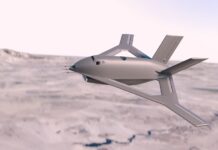The U.S. Air Force awarded BAE Systems about US$50 million contract to deliver high-resolution, wide area infra-red persistent surveillance system. BAE has been developing such a system under the Autonomous Real-time Ground Ubiquitous Surveillance-Imaging System (ARGUS-IS) and Airborne Wide Area Persistent Surveillance Sensor (AWAPSS) programs, developed under other DARPA Wide Area Persistent Surveillance initiatives. The current system will be designed to enable a joint forces command in theater to constantly monitor critical areas of interest, using infra-red and video imagers, offering high degree of target location accuracy.
ARGUS-IR is seeking solutions for a Wide Field of View (WFOV) infrared system that provides real-time, high resolution wide area video persistent surveillance capability with frame rates and resolution that enable the tracking of dismounts and provide for an expanded range of persistent surveillance capabilities.
These persistent wide area sensors are based on gigapixel sensor developed for ARGUS-IS program. This gigapixel sensor is comprised of four focal plane mosaics containing 92 five-megapixel imagers in each, for a total of 368 focal plane arrays using four sets of optics. The raw pixel data from the sensor is transmitted to the airborne sensor processing subsystem over mass-parallel fiber-optic link, feeding 16 processing modules, processing data from multiple focal plane arrays. The images produced by the gigapixel sensor go through image preprocessing, enhanced with intensity and uniformity correction parameters as determined by the radiometric calibration of a camera.
The system is composed of two subsystems – the WFOV sensor and associated, real-time airborne processing system. The two subsystems are packed in a pod, compatible with unmanned systems such as the MQ-9 Reaper, MQ-1C Warrior, A-160 Hummingbird and tethered aerostats. For the near term the podded sensors are flown on Black Hawk helicopters, to be followed by tests on flown on an A-160 Hummingbird UAS which will downlink semi-processed data for further processing and exploitation.
For ARGUS-IS DARPA considered baseline sensors with 200 to 400 megapixel (million pixels) with the objective sensor upgradable to 400-600 Megapixels, operating at the two infrared bands – the Long Wave Infra-Red (LWIR 8-10μ) and Medium-Wave IR (MWIR 3-5μ), capturing the scene at a frame rate of five frames per second. The airborne segment also performs demosaicking, cutting the large image into smaller bits. ARGUS-IS uses a common data link operating at a raw bit rate of 274Mbps.
The ground processing subsystem enables users to interact with the ARGUS-IS airborne systems through a NASA World Wind user interface software. Video analysts will be able to designate areas of interest for constant, persistent coverage. In addition, analysts can call a video of a particular target from the archive, for comparison with the real-time video. The ARGUS-IS sensor responds by opening the requested video window and keeping a specified target within sight. The size of a video window, video rate, and level of image compression are determined by users based on their requirements. Video windows are electronically steerable, and resolution can be reduced to maintain high quality of service and responsiveness. The system will be able to identify and track multiple moving targets, tracking vehicle-sized moving objects across the entire field of view.













